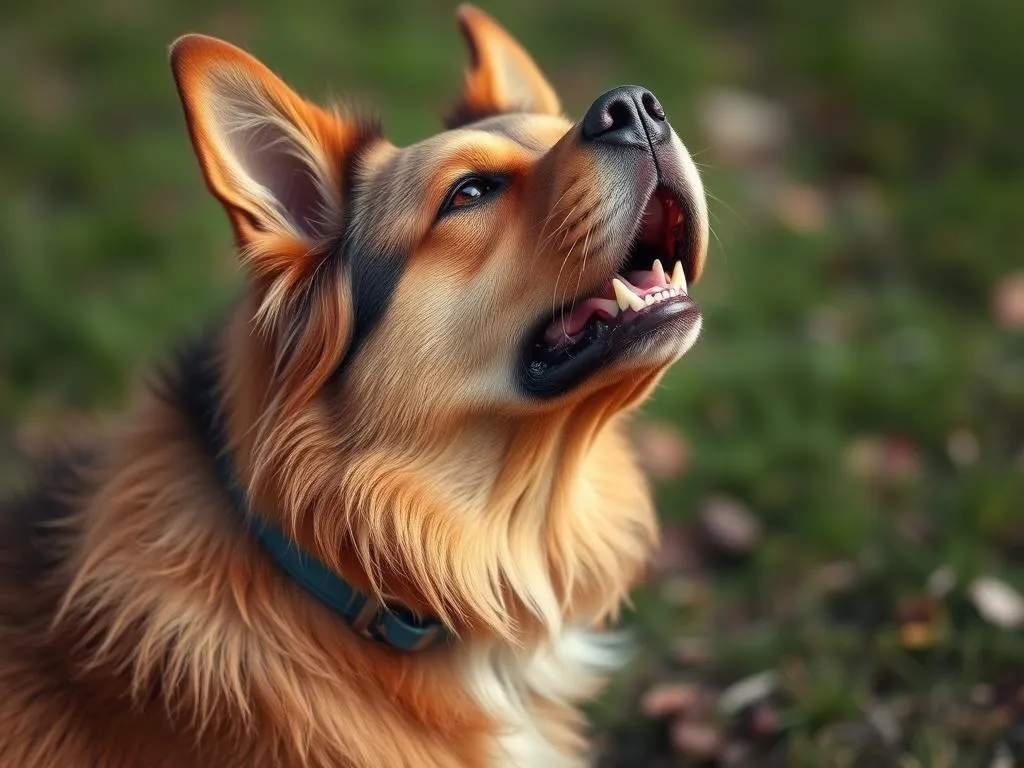
Introduction
Dogs are remarkable creatures, known for their loyalty and diverse ways of communicating with humans and each other. One intriguing aspect of canine communication is howling. Many dog owners have likely experienced the phenomenon of their pet howling back when they join in with a howl. This raises an interesting question: why do dogs howl when you howl? Understanding this behavior not only deepens our appreciation of our furry friends but also enhances our ability to communicate with them effectively. In this article, we’ll explore the reasons behind canine howling, delve into their historical context, and specifically address the question of why dogs respond to human howls.
Understanding Howling in Dogs
What is Howling?
Howling is a form of vocalization that is distinct from barking or whining. While barking is often associated with excitement, alertness, or warning, howling is typically a prolonged, mournful sound. This vocalization can serve various functions, depending on the context and the dog’s intent. Understanding howling is crucial for interpreting your dog’s needs and emotions.
Historical Context
To grasp why dogs howl, we must look back at their ancestors—wolves. Historically, howling served as a crucial communication tool among wolf packs. It allowed wolves to locate one another, signal their presence, and establish territory. This behavior has been passed down through generations, and even today, many domestic dogs retain this instinctual communication method.
Reasons Dogs Howl
Communication
Howling serves as an essential form of communication among dogs. Dogs may howl to convey different messages, such as alerting others to danger, locating pack members, or simply expressing their presence. Each howl can vary in tone and duration, often indicating different emotions or intentions.
Response to Sounds
Dogs are highly sensitive to sounds, and their howling can often be triggered by external noises, such as sirens or musical instruments. Many dog owners have noticed that their dogs join in when they howl—a phenomenon that can be attributed to dogs’ natural instinct to respond to similar vocalizations. This response is not just limited to humans; dogs may also howl in response to other sounds they perceive as calls.
Social Bonding and Pack Behavior
In pack dynamics, howling plays a significant role in strengthening social bonds. Dogs are pack animals, and howling together can reinforce their connection to one another. It can also help establish hierarchy and territory within a group. When a dog howls in response to its owner, it may be trying to engage in social bonding, signaling that they consider their human a part of their pack.
Emotional Expression
Dogs are emotional beings, and howling can often indicate their emotional state. They may howl when feeling lonely, anxious, or excited. For instance, a dog left alone for an extended period may howl out of loneliness, while an excited dog may howl in anticipation of playtime. Understanding the emotional context of howling can help owners better respond to their dog’s needs.
The Science Behind Howling
Canine Hearing and Sensitivity
One reason dogs are such proficient howlers is their exceptional hearing abilities. Dogs can hear sounds at frequencies much higher than humans can, which allows them to detect and respond to sounds that might go unnoticed by us. This heightened sensitivity can explain why dogs howl in response to certain noises, including human howls.
Genetics and Breed Differences
Genetics also play a role in howling behavior. Some breeds are more prone to howl than others due to their ancestry and original purpose. Breeds such as Huskies, Beagles, and Bloodhounds are known for their howling tendencies. For these breeds, howling is often a natural and instinctual behavior, deeply rooted in their genetic makeup.
Why Do Dogs Howl When You Howl?
Mimicry and Social Interaction
One of the most fascinating aspects of canine behavior is mimicry. Dogs may view human howling as an invitation to join in, responding to the sound in a way that reflects their natural instincts. This mimicry fosters social interaction and can strengthen the bond between a dog and its owner. When you howl, your dog may interpret it as a form of communication, prompting them to respond in kind.
Emotional Resonance
Dogs are highly attuned to human emotions. When you howl, the emotional tone of your voice can resonate with your dog, encouraging them to join in the vocalization. This response may be an expression of empathy, as dogs often mirror the emotions of their human companions. When you howl in a playful or joyful manner, your dog may feel inclined to participate, creating a joyful vocal exchange.
Encouragement and Reinforcement
Humans often unintentionally encourage howling behavior. If a dog howls and receives attention or praise from its owner, it may view this as positive reinforcement. Over time, this encouragement can lead to more frequent howling in response to human vocalizations. Recognizing this dynamic can help owners understand their role in their dog’s howling behavior.
How to Interpret Your Dog’s Howling
Context Matters
When trying to interpret your dog’s howling, context is crucial. Consider factors such as the time of day, the environment, and the situation leading up to the howl. For example, if your dog howls during a quiet evening, it may be responding to loneliness. Conversely, if they howl during playtime, it may indicate excitement.
When to Be Concerned
While howling can be a normal part of canine behavior, excessive howling may indicate underlying issues. Signs that howling could be problematic include prolonged vocalizations, signs of distress, or howling that disrupts household harmony. If you notice these signs, it may be beneficial to consult a veterinarian or a dog behaviorist to rule out health issues or behavioral concerns.
Tips for Engaging with Your Howling Dog
Encouraging Healthy Howling
Howling can be a fun and engaging activity for both you and your dog. Incorporating howling into playtime can be an enjoyable bonding experience. You might consider playing music or using a harmonica to encourage your dog to join in the howling fun. This not only entertains your pet but also provides an outlet for their vocal expressions.
Training and Behavior Modification
If your dog’s howling becomes excessive or problematic, training and behavior modification techniques can help. Positive reinforcement is key; rewarding your dog for quiet behavior can encourage them to vocalize less frequently. Gradually, you can teach your dog when it’s appropriate to howl and when it’s not.
Conclusion
Understanding why do dogs howl when you howl opens up a new dimension of communication between you and your furry friend. Howling serves various functions, from communication and emotional expression to social bonding. By recognizing the cues behind your dog’s howling, you can strengthen your bond and ensure a harmonious living environment. Observing your dog’s vocal behaviors and engaging with them meaningfully can enhance your relationship and lead to a better understanding of their needs.
Frequently Asked Questions (FAQs)
Are all dogs prone to howl?
Not all dogs are prone to howl, as it largely depends on their breed, genetics, and individual temperament. Some breeds, like Huskies and Beagles, are known for their howling, while others may rarely vocalize in that manner.
Is howling a sign of distress?
Howling can be a sign of distress, especially if it occurs excessively or is accompanied by other signs of anxiety. It’s important to assess the context and your dog’s overall behavior to determine if their howling indicates a problem.
How can I train my dog to howl on command?
Training your dog to howl on command can be achieved through positive reinforcement. Start by howling yourself and rewarding your dog when they join in. Consistent practice and encouragement will help your dog learn to associate the command with the action.
What other sounds do dogs respond to?
Dogs can respond to a variety of sounds, including sirens, musical instruments, doorbells, and the sounds of other animals. Each dog may have their unique triggers, so observing your dog’s reactions can provide insights into their auditory preferences.
By understanding the nuances of howling and canine communication, you can foster a deeper relationship with your dog, appreciating the unique ways they express themselves.









